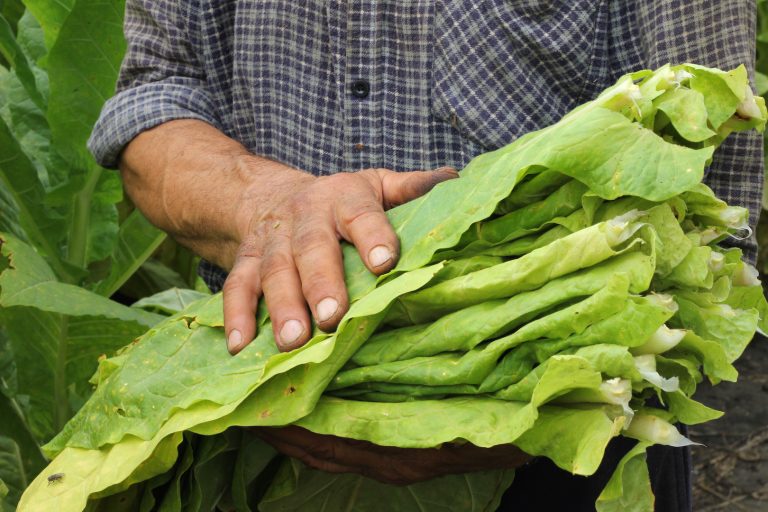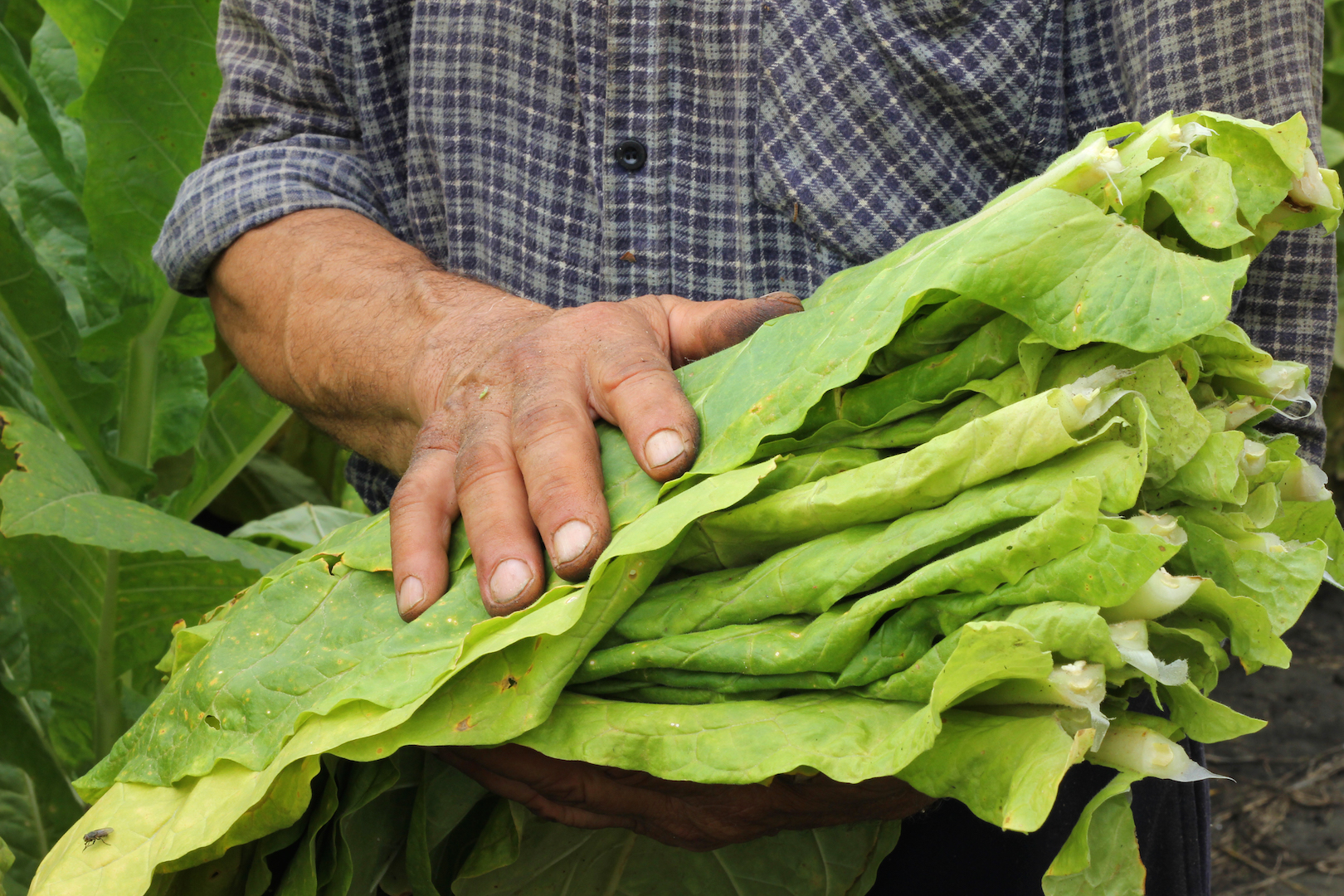- Scientists have created a new type of polio vaccine that they hope will be less dangerous than currently available polio vaccines, which include live poliovirus.
- The new vaccine technology begins with the creation of virus-like particles stripped of their infectious capabilities and grown in genetically modified tobacco plants.
- The vaccines are currently in animal testing, but the researchers say that the new technology offers the promise of being able to rapidly and cheaply manufacture vaccines against any virus.
Seeking an alternative to using live poliovirus to create the polio vaccine, scientists are infecting a relative of the tobacco plant with a virus “containing the genetic material of polio” to manufacture a new polio vaccine from the modified plant leaves. If the experimental technique is considered successful once the vaccines have been tested in humans, it may also be used to create a wide range of other vaccines.1
Scientists at the John Innes Center in Norwich, U.K., used their previously developed “Leaf Expression Systems Hypertrans® transient expression technology” to create virus-like particles (VLPs) that look like poliovirus but do not contain any infectious material.1 They hope that the polio vaccines made from these manufactured VLPs will be safer than those currently used, which are created out of live attenuated (weakened) poliovirus or poliovirus inactivated with formaldehyde.2
Dr. Andrew Macadam, of the U.K.’s National Institute for Biological Standards and Control, explained, “Current vaccines for polio are produced from large amounts of live virus, which carries a threat of accidental escape and re-introduction.”3
Live oral polio vaccine was preferred by public health officials beginning in the early 1960s because it not only “immunized” the child who got the vaccine but also passively immunized people who came in close contact with a recently vaccinated child shedding live vaccine strain poliovirus in body fluids. However, children and adults in countries around the world have been paralyzed by vaccine strain poliovirus infections for more than half a century and the U.S. switched from live polio vaccine to inactivated polio vaccine in 1999 to prevent the spread of vaccine strain poliovirus.4
Now, researchers are looking for new ways to create inactivated polio vaccines that cannot cause vaccine strain polio infections.5
Previous successes in creating VLPs of human papillomavirus and hepatitis B viruses, as well as a synthetic vaccine against foot-and-mouth disease, prompted scientists in the U.K. to build upon the plant-based technology. Earlier attempts to create poliovirus VLPs had resulted in particles that were too unstable to use in a vaccine, because the genetic material that allowed the virus to replicate itself—which had been purposefully stripped from the manufactured VLPs—also was responsible for holding the particles together. Ultimately, mutations in the protein coats were harnessed to create VLPs stable enough to work with.6
Purposefully Infected Soil Produces Genetically Infected Plants
To produce the polio-strain tobacco plants, the scientists started with the genetic coding needed to create just the outer coating of the poliovirus, then modified it by adding material from viruses known to infect plants. That mixture was added to soil bacteria and taken up by the tobacco plants, which subsequently began expressing large quantities of the polio-based VLPs needed to create the experimental polio vaccine.7
Initial animal studies indicate that the plant-based polio vaccine was effective in provoking an antibody response against poliovirus, but questions remain before the approach is ready for clinical trials. For example, would a vaccine extracted from a tobacco plant contain nicotine?
Plant Technology Promises Quick, Cheap Vaccine Development
It is not only the production of plant-based polio vaccine that has the scientists excited: The technology is said to lend itself to rapid creation of a vaccine against nearly any virus, as long as the researchers have the correct genetic code. Lead researcher, Professor Lomonossoff has said “… you could actually identify a new strain of virus and produce a candidate vaccine in three to four weeks.”
He added that the technology would allow for rapid production of a vaccine against potential epidemics like Ebola or Zika. It is also being evaluated as an alternative to chicken eggs to produce the annual influenza vaccine, and for producing antibodies in cancer therapies.
Scientists see plant-based technologies as a new frontier for manufacturing pharmaceutical products. Citing plants as “serious competitors to bacteria, insect cells, yeast or mammalian cells as production systems for pharmaceutical materials,” Professor Lomonossoff pointed out that plants are an inexpensive and easy medium to work with because they require only “simple nutrients, water, carbon-dioxide and sunlight for efficient growth.” He added that their “transient expression system can be adjusted rapidly with low costs.”8
Collaborators in this research included scientists from the John Innes Centre, The National Institute for Biological Standards and Control, Oxford University, University of Leeds, Diamond Light Source, and the Henry Wellcome Building for Genomic Medicine. Funding for the research was provided by the World Health Organization.
References:
1 Plant-Produced Polio Vaccines Could Help Eradicate Age Old Disease. John Innes Centre Aug. 15, 2017.
2 Marsian J, et al. Plant-Made Polio Type 3 Stabilized VLPs—A Candidate Synthetic Polio Vaccine. Nature Communications Aug. 15, 2017.
3 Gallagher J. Plants ‘Hijacked’ to Make Polio Vaccine. BBC News Aug. 15, 2017.
4 Beaubien J. The Oral Polio Vaccine Can Go Feral, but WHO Vows to Tame It. NPR Nov. 10, 2015.
5 See Branswell H. New research could make safe polio vaccine, critical for eradication, a reality. STAT Dec. 21, 2015.
6 See Footnote 1.
7 See Footnote 3.
8 See Footnote 1.














6 Responses
Good or BAD?
Not sure about using a known carcinogen to formulate a vaccine. Long term affects will only be discovered… too late. And there is no gong back to fix the lives already in the pipeline.
Will this protect us from Polio, or from Tobacco?
No polio vaccine is needed, when worse than the disease. Unless the intent is to give cancer to polio, just kill folks with anthrax vaccine or HPV vaccine. And don’t forget the boys!!!
OUR WHOLE COUNTRY IS BECOME INDIA, ALL BRIBES AND INCOMPETENCY. TOP “LEADERS” ARE LEADING LIARS.
“Artificial sweetener,” cyclamate, came from tobacco (or was that only on The Simpsons)? But unregulated chemicals–which notably could be patented–are the whole point of destroying our foods. Because top gov & military brass financially invested, they don’t mind killing us, as they get away with it, and get richer. YEAH, WE THOUGHT THAT COULDN’T HAPPEN, HERE IN these united STATES.
Duesberg the UC Berkeley genius, right again. Cancer is aneuploidy, not gene mutation.
This article concerns the non-link to cancer by way of DNA virus.
http://sanevax.org/hpv-not-cause-cervical-cancer/ – What if HPV does NOT cause cervical cancer?
I might remind everyone that PMV (polio myelitis virus??) was hotly debated and contested by many scientists when Salk and Sabin were competing for the right and prestige of creating the vaccine. Read; “Trial by Fury – The Polio Vaccine Controversy”. Nothing was going to get in their way of finding a “cure”….including whether or not Polio was in fact causing a disease that was long known as an affliction of metal workers (“Fear of the Invisible”-Janine Roberts) and a mild intestinal tract virus. There was no epidemic before the 20th century as is widely believed currently. One thing was certain, “virus-pathogen-germ” hunters were being released from universities across the country in large numbers. Epidemiology if used as it is meant to, would have likely declared polio as a non-starter. Virus don’t selectively pick children to infect. They are stridently opportunistic.
That’s interesting that the experimental technique to use a relative of the tobacco plant with a virus to possibly create a wide range of other vaccines, including polio. If it is successful, I would consider the options to buy tobacco leaves, even though I don’t use tobacco. I’m not against medical benefits of tobacco when used for healing.